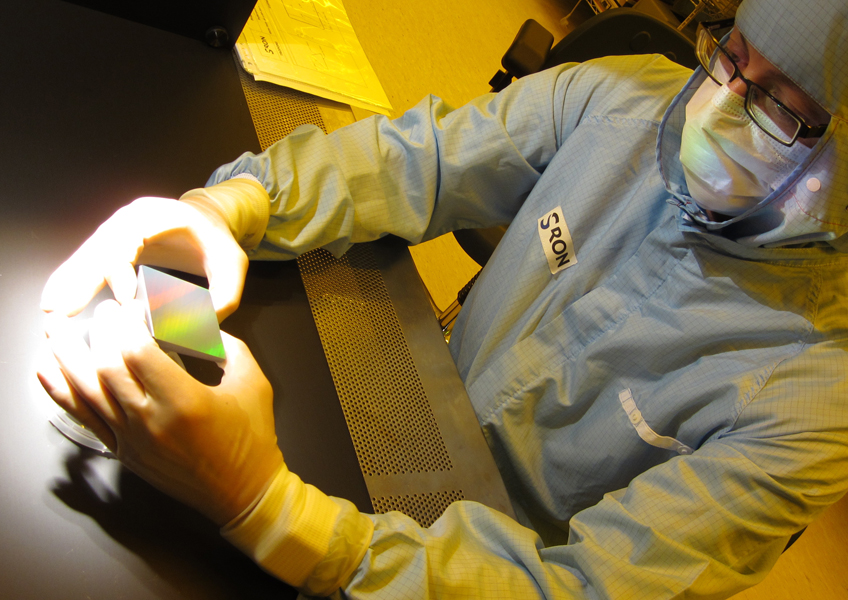SRON Netherlands Institute for Space Research has supplied the first space-qualified immersed gratings this week. These gratings will be the first in the world to be used in space. They will be placed in the TROPOMI instrument, which will survey air pollution and greenhouse gases from space from 2015 onwards. The high-tech gratings developed by SRON signify a breakthrough for international space technology, as they are compact but still make highly accurate instruments possible. Over the next ten years an entire generation of new satellite instrument will follow this example.

TROPOMI, a so-called imaging spectrometer, will scan the earth’s atmosphere for gases at a height of 800 km onboard European environmental satellite Sentinel 5-precursor (ESA). Thanks to its wide field of view, the instrument can measure every spot on earth in a single day and with considerable precision. The gratings will be placed in the infrared module of TROPOMI where they will unravel light into a rainbow of colors thus making the absorption of infrared light by the atmosphere measurable. For example, this approach renders ‘the fingerprints’ of the greenhouse gas methane visible. Understanding methane sources is vital for a better understanding of how our climate develops. Furthermore, the instrument can distinguish the emission of pollutants from different cities and it will provide a far better insight into the global water cycle.
Size reduction

An immersed grating is a silicon grating that is illuminated from the inside: a specially developed combination of a prism and an optical grating that separate the radiation captured according to wavelength. The gratings make it possible to drastically reduce the size and weight of the spectrometer: by a factor of 40 compared to conventional gratings. With conventional gratings it would be impossible to realize the instrument within the current requirements for its size. For the development of the gratings, SRON has made use of advanced lithography and microfabrication techniques from the chip industry in collaboration with TNO and Dutch and European companies. During an 18-month program the SRON researchers have perfected the technique and qualified the gratings for use in space.
Project leader Aaldert van Amerongen: ‘This means that the gratings have now been tested intensively in an environment that simulates the conditions in space. The gratings also fully satisfy the expectations of the client, are ready for integration into the TROPOMI instrument and will survive the launch. These are the first space-qualified immersed gratings in the world. TROPOMI is the first space instrument to make use of these gratings, but it will certainly not be the last! For various future space instruments the decision to use immersed gratings has already been taken.’
Partners

SRON delivered the gratings this week to the British company Surrey Satellite Technology Ltd. (SSTL), which is working on behalf of Dutch Space in Leiden. TROPOMI is being developed in a partnership between KNMI, SRON, TNO and Dutch Space, on behalf of the Netherlands Space Office (NSO) and ESA. The scientific leadership is in the hands of KNMI (principal investigator) and SRON. Dutch Space is leading a team that will build the instrument. TROPOMI is being financed in collaboration with ESA by the following Dutch government ministries: Economic Affairs, Agriculture and Innovation; Education, Culture and Science; Infrastructure and Environment. The Sentinel 5-Precursor mission with the TROPOMI instrument onboard is being realized in a collaboration between NSO and ESA. The Sentinel-5 p satellite is part of the extensive program Global Monitoring for Environment and Security (GMES) of the European Commission and ESA.


